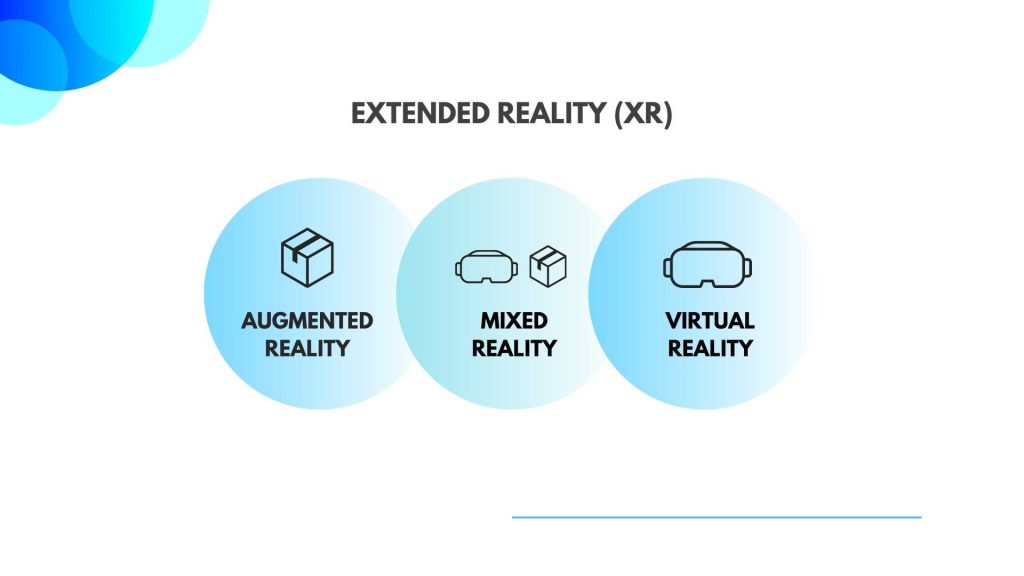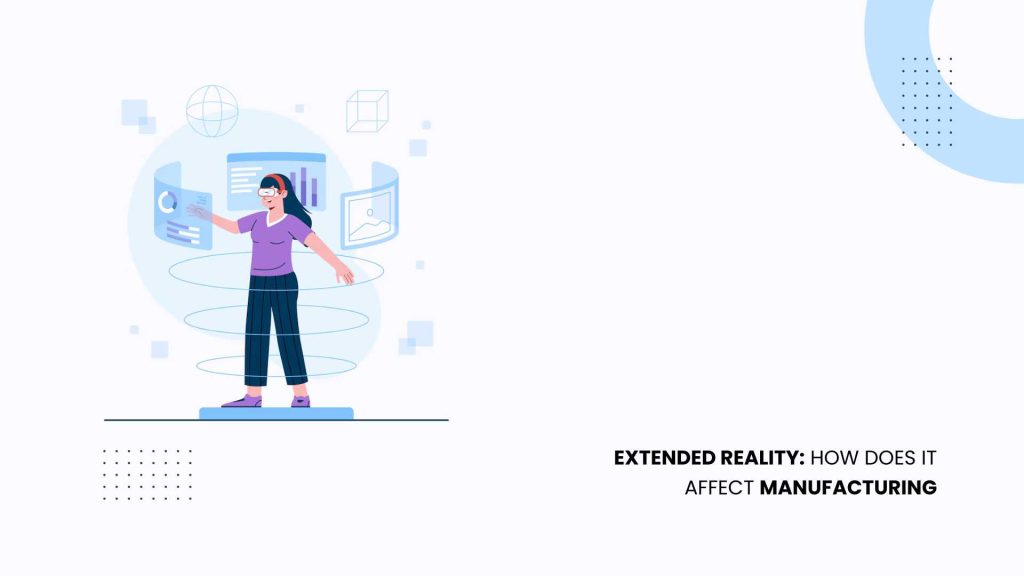Extended reality (XR) emerges as a game-changing factor, especially within the manufacturing industry. XR includes a range of immersive technologies such as Augmented Reality (AR), Virtual Reality (VR), and Mixed Reality (MR). Each providing distinct features that transform different parts of manufacturing operations.
Understanding VR, AR, and Mixed Reality

Augmented Reality (AR):
Augmented reality merges digital information with the physical world, enriching real-life encounters with computer-generated components. Within the manufacturing sector, AR allows technicians to view equipment data, assembly instructions. And maintenance procedures in their line of sight, simplifying intricate tasks and minimizing mistakes.
Virtual Reality (VR):
VR creates entirely immersive digital environments, transporting users to simulated worlds where they can interact with objects and environments. In manufacturing, VR facilitates realistic training simulations, design prototyping, and remote collaboration, fostering innovation and efficiency across the production lifecycle.
Mixed Reality (MR):
MR blends elements of both AR and VR, seamlessly integrating virtual content into the physical environment and enabling interaction with real and digital objects. MR enhances manufacturing workflows through dynamic visualization of complex machinery, spatial planning, and interactive training scenarios.
Impact of AR and VR on ERP Software
Extended reality technologies, particularly AR and VR, are poised to revolutionize Enterprise Resource Planning (ERP) software, transforming traditional manufacturing processes in several key ways:
Better Training Systems:
AR and VR enable immersive training experiences that simulate real-world scenarios, allowing employees to develop essential skills in a safe and controlled environment. Manufacturers can enhance workforce competence and efficiency by integrating training modules directly into ERP systems, reducing training time and costs.
Improved Order Picking:
AR-powered smart glasses with visual cues and real-time data overlays revolutionize order-picking processes in warehouses and distribution centers. By superimposing order details, inventory locations, and navigation instructions onto the user’s field of view, AR enhances picking accuracy and speed, optimizing inventory management within ERP systems.
Ergonomic Analysis:
VR technology enables manufacturers to conduct ergonomic assessments and design evaluations in virtual environments, ensuring optimal workstation layouts and minimizing workplace injuries. By integrating VR-based ergonomic analysis tools into ERP software, manufacturers can proactively address ergonomic concerns, enhancing employee well-being and productivity.
Marketing and Sales:
AR empowers manufacturers to create immersive product demonstrations and interactive sales presentations, allowing customers to visualize products in real-world settings before making purchasing decisions. By embedding AR features into ERP systems, manufacturers can streamline sales processes, providing sales teams with dynamic visualization tools to engage customers effectively and drive sales.
Conclusion
Integration of AR and VR in Acumatica ERP system transforms manufacturing by providing immersive visualization, streamlined workflows, and improved decision-making. AR and VR technologies simplify manufacturing operations, boosting productivity and training quality. Integration with ERP platforms enables real-time data analysis and collaboration, enhancing agility. This synergy revolutionizes manufacturing, improving efficiency, innovation, and competitiveness.

Vijay comes with a vast experience in ERP and enterprise solutions space with about 20 years of experience in various packaged application like Acumatica, SAP, Orion, Salesforce.com, SugarCRM and, SalesLogix.

